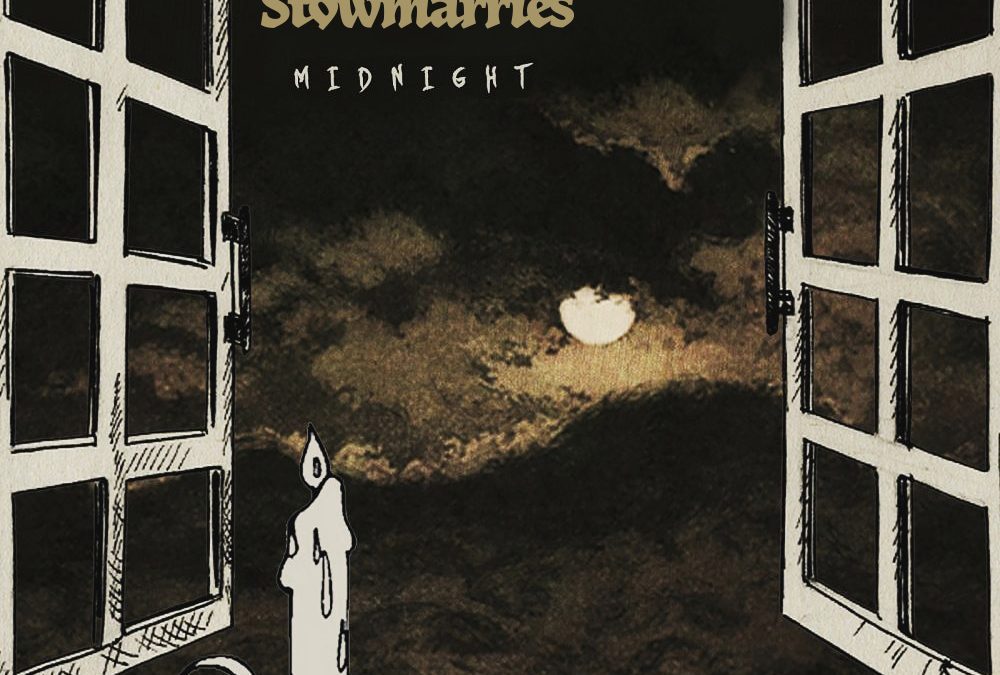I was born in ’66, the youngest in my family. As a kid, I was into all sorts of music from the ’60s and ’70s. My grandfather was a very good pianist and accompanist, he also played the organ and conducted. In 1908, he made a little extra money providing the music during the silent movies at the local cinema. My brothers collected loads of records from the ’60s and ’70s. I used to pinch them to listen to.
My recordings are really grounded in whatsoever I used to listen to early on through the ’70s: Floyd, Bowie, Iggy Pop, Lou Reed… until I became aware of more influential music I heard on 4zzz radio, British Invasion groups like the Stones and The Kinks, and punk rock bands like the New York Dolls. I taped 4zzz broadcasts so I could transfer music I liked onto blank tapes, and I began homing in on classic Post-punk through the late ’70s, a year or two before I was even in high school.
That was how I got listening to a lot of the records that played a part in the Post-punk movement. The first significant single I captured on tape was Siouxsie and the Banshees’ Hong Kong Garden. The Hong Kong Garden was a Chinese restaurant in Chislehurst in London that Siouxsie and her friend used to go to. The Chinese people who worked there got terrorised by skinheads visiting the take-away, and Siouxsie and her friend would try and say ‘leave them alone’ because they used to mercilessly torment these people for being foreigners. It left a helpless, hopeless, sickening taste. The song was a kind of tribute.
One of classic Post-punk records from 1980 my brother had was the compilation album, ‘Boys Don’t Cry’. I was a pimply high school kid playing ‘Jumping Someone Else’s Train’ and ‘Fire in Cairo’! I got interested, reading my brother’s New Musical Express, to buy Joy Division’s final album ‘Closer’.
I’d been listening to Australian bands such as Radio Birdman and Jimmy and the Boys, The Sports, Dave Warner from The Suburbs, and the quirky ska, synth-pop, fast-paced acts like The Reels on Double J. Then a girl I knew at school asked me what I thought of The Cure’s new album. Seventeen Seconds.
Seventeen Seconds would connect the dots from which I worked and work today. Plain, newly ethereal, single-note, downbeat, ambient, echoing, ‘gloomscape’, vague, often unsettling lyrics, and dark, spare, minimalism. Cold, dark and empty, though translucent, firm, but above all, bleak.
I think of new wave as 1980 new romantic with Adam and the Ants, Spandau Ballet, 1981-Duran Duran and Depeche Mode. Themed, costumed traits, funk, electronica, austere, but at the same time cabaret, makeup, exotic, club, visual, energy, party. All of which played to audiences of those people.
They had The Blitz and The Batcave in Soho. I had The Bohemian in Elizabeth Street.
What it did was usher in a whole new wave. Ken Russell released a string of influential film, not least ‘Gothic’ with Natasha Richardson and Julian Sands, and what I wanted to do was really target, and focus attention on that. I wanted it timed and aimed to coincide with Brisbane nightlife, gangs of goths, because goths were the predominant species that had survived adaptation, thanks largely to the ongoing Leeds scene that spawned The Sisters of Mercy that, in turn, came from Post-punk, the Banshees and Cure.
What I adapted was a brand that’s my own, a largely symbolic brand, driven by character and place that can be interpreted as universal representation of things going on around us today, its figures and images symbolic of things in life, its lyrics formed of personification. It’s easy to recognise because the characters are two-dimensional, events in the songs are to do with some moral quality or abstraction.
Nothing’s fleshed out. It is three-minute pop-format symbolism at the very least.
Before I began performing live at The Bohemian, I came up with a lightweight brand of gothic gloom.
It was unique in 1989 on the Brisbane nightlife scene in Elizabeth Street the city through 1990, ’91, ’92, and into ’93. Being out of action for so many years took its toll, so I broke the silence in the 2010’s
And I decided to get something out there that people could listen to.
It actually ended up taking quite a few years. But when ‘Neck Romancer’ came out in 2015, it raced to ten million views on YouTube, and that led to everything now, everything from thousands of likes, to anything do to with record label deals ever since.
I can thank the rich vein of popular music within this subculture. Most Post-punk bands that I feel kindredness to are well over the forty-year mark these days. Post-punk isn’t dead, it waned. I’m Post-punk but I started writing and performing my brand of music after Post-punk new wave had waned.
And I’m still intent on flogging the age just gone. I take a Post-modern attitude to Post-punk new wave because when I arrived, the scene was already an age of innocence lying in ruins. The carnival was over.
I became a sort of Post-modern flag-bearer. I enjoyed all the little niches and fringes of my creative world.
I want to contribute to it still, with a spirit of generosity and philanthropy, to a pluralistic, diverse, multifaceted scene, to its healthy subculture, one based on wisdom and generosity.
It’s rebellion against philistinism, a rebellion that values art. That’s how my brand of music has become so rich in imagery, diverse in its range of references, embracing the wide diversity of style that can make it sometimes difficult to pigeonhole, yet each lyric still holding a distinct origin or meaning.
You’ve just got to get the right amount of lush, layered, gothic gloom creep in from time to time. It is, after all, only human.

